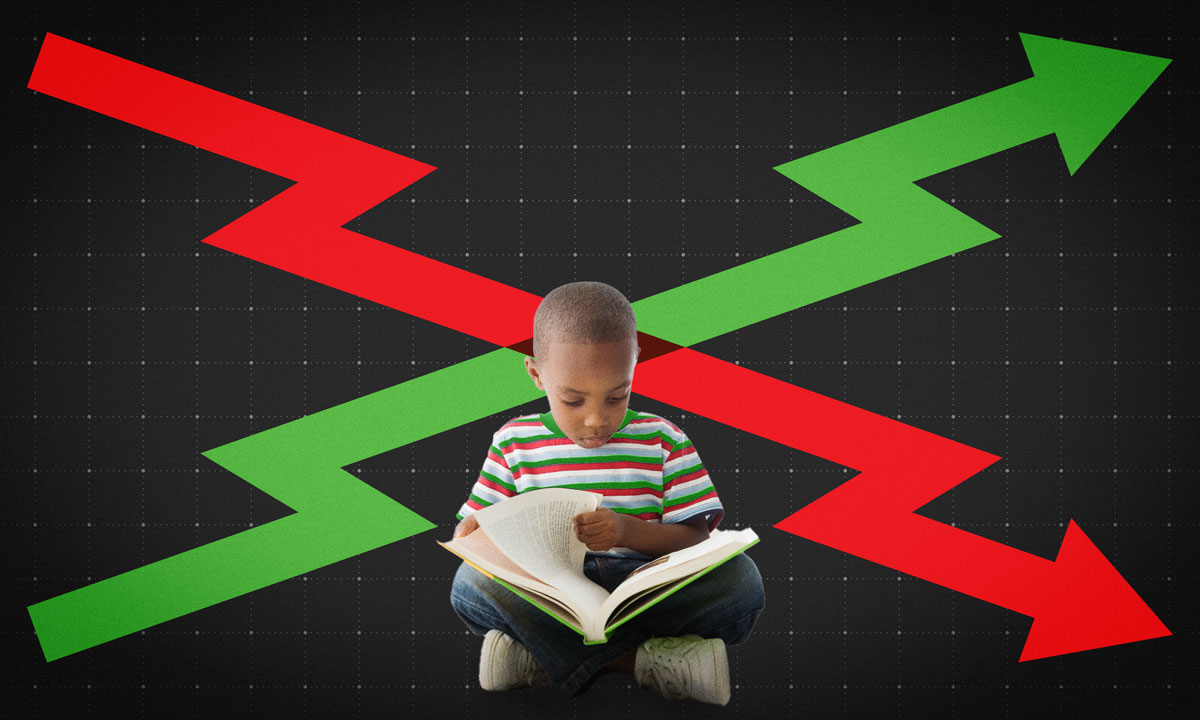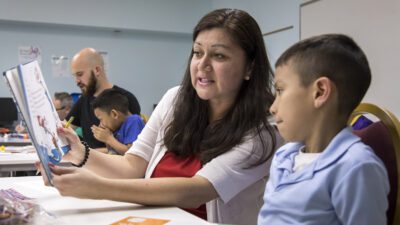
This piece first appeared at The 74, a nonprofit news site covering education. Sign up for free newsletters from The 74 to get more like this in your inbox.
Earlier this summer, the curriculum and assessment company Amplify reported that 70% of kindergartners and first graders were on track to learn to read. According to data collected from a test called DIBELS, scores were up significantly over their post-pandemic lows, and young students had made big gains in early reading skills.
That’s great news, right?
Not so fast. According to a variety of other exams, including formative assessments from Curriculum Associates and NWEA and the national NAEP exams, student reading scores have continued to decline.
So are kids making progress in reading, or not?
The answer may depend on what aspect of reading you look at. That is, not all reading tests measure the same thing. Amplify’s DIBELS is primarily composed of short, one-minute assessments evaluating whether kids know their letter sounds and can understand how those sounds combine into words. Children who master these basic skills are more likely to be better readers than those who don’t.
![]() Sign up for the EdWeekly, a Friday roundup of the most important education news of the week.
Sign up for the EdWeekly, a Friday roundup of the most important education news of the week.
But reading for comprehension depends on more than just decoding letters into sounds. Your brain might be able to decode words like “ribonucleic” or “semiquincentennial” but may have long forgotten the knowledge of biology and history necessary to understand their meaning.
Under what’s known as the simple view of reading, comprehension depends on two factors: decoding (sounding out words) and language comprehension (understanding the meaning of words and sentences). Critically, if kids can’t decode a word, they won’t be able to understand it. This is fundamental. However, even if students can decode a word, if they don’t recognize it, they won’t know what it means.
In other words, both skills matter. And yet, many states have a disconnect between the policies they’re pursuing to improve reading outcomes and the tests they’re relying on to tell them if those policies are working.
Let’s start with the policy side. According to an EdWeek analysis, 40 states and the District of Columbia passed “science of reading” laws between 2013 and 2022. Thanks in part to reporting from the Sold a Story podcast, 26 states strengthened those laws or adopted new ones in just the last few years.
However, it’s proven much easier to change policies around decoding and phonics than to improve more complex skills. A 2023 analysis of what’s actually in those state reading laws found that they rarely emphasize oral language or writing, and just six states touched on the development of background knowledge. While many of the “science of reading” bills provide additional money or supports, they may not be strong enough to affect reading comprehension scores.
Related reads



There’s a historical parallel here. In the early 2000s, the Bush-era Reading First initiative spent $1 billion a year to change how reading was taught in schools. An evaluation of the program found that it worked in the sense that teachers modified their classroom instructional practices to be more aligned with research. Student decoding skills also improved by a noticeable degree, but it wasn’t enough to meaningfully change reading comprehension scores. Congress eventually eliminated the program.
States may be on a similar trajectory right now. Each has its own test of reading comprehension in grades 3 to 8. But those are not equipped to measure discrete skills like decoding or vocabulary.
Part of the problem is that comprehension is tied up in so many other facets of language and knowledge. As researchers have noted, how well students comprehend any given reading passage is inherently linked to their vocabulary and background knowledge on that particular topic. If the passage happens to be about dolphins or baseball, kids who know more about those subjects will look like they have better reading comprehension skills than those who don’t simply because of their incoming background knowledge.
So how can states get out of this trap? There’s really only one way forward — they need to break their reading tests down into more discrete, manageable chunks.
In the early grades, they would need to understand how many of their kindergartners and first graders are mastering basic decoding skills. Many states now require universal screening tests of exactly these skills, but they rarely report the scores publicly or share them with parents. In England, they do this through a very simple 40-word phonics check that is administered to every 6-year-old. The 2025 results aren’t out yet, but in prior years more than 80% of English 6-year-olds passed. How many American kids could meet the same standard? We don’t know, but any state or district could adopt its own version of the phonics check. At the national level, NAEP could implement one as well.
States might also want to copy how the Brits and other international leaders structure their testing systems. Instead of having kids read totally unfamiliar text passages, like we do in America, these systems rely on a core body of content that they expect all kids to master. Then, they test kids on their ability to understand and make connections across what they’ve learned. No state does this right now, but they could. Similarly, states could take a harder look at their tests in subjects like civics, history or science, which could function as discipline-specific reading exams that are arguably more important for the real world than asking kids to “find the main idea” from short, disconnected reading passages.
Without closing the gap between what skills they want students to demonstrate and what they’re actually measuring on their tests, state leaders will have no clue if students are mastering decoding or being prepared for higher-order skills. Those same leaders may also continue to wonder why they aren’t seeing gains in reading comprehension scores.
Recommended reading



